QuestionHello.
I am a junior rider competing on the 'A' and 'AA' circuits primarily in the big
eq such as the Maclay, USEF medal, USET and WIHS. I train with two of the
top trainers in the country, although I decided to inquire with a third party
proffesional such as yourself to help me with a problem I am trying to
smooth out. I read your 'experiences' and I think that you are well-suited to
help me.
I recently picked up a new equitation horse, an 8 year old zangersheide mare
with primarily a jumper background. She has had some experience in the
equitation field, although this will be her first year competing at the medal
and maclay finals. So, because of her previous experiences she seems to have
the 'jumper bid' at the jumps when cantering around a course. It seems if I
stay softer with my hand and body, she doesn't give me as much of a bid
towards the jump. But there still seems to be one, and its challenging for
myself not to accept it and say 'lets go!' to take the longer, more
superman-ish distance. How do you suggest that I train the jumper
personality out of my new equitation horse? What's a good way to get rid of
this annoying bid that she takes to every jump?
I also have another question. This horse seems to hang its legs in the air a
little over the jump, and has to jump loftier to make up for it. Also, because
of her jumper background, she jumps in a little more of a quicker, broken
down jump, like one that has three segments that are not quite smooth. For
example, you can see the take off, then quickly in the air, then quickly breaks
down to the landing. It's not the smooth, soft, even jump that I'm used to on
some of my other mounts. How do you suggest that I train all of this that I
listed? Thanks so much, and I'm sorry this is so long...
AnswerJumpers as you know are worlds apart from hunters. Hunters are very elegant, graceful, and almost appear to be floating on air. As a young rider advances in their career from hunters to high level equitation classes such as the USET and the Maclay, they are learning the transition from the hunter ring to the jumper ring. While these rings seem so vastly different, their fundamentals are the same. The biggest difference, is that the higher the jumps, the more critical your decisions become and the more difficult it is to hide a mistake. As you most likely have already experienced, a long distance on a lengthening and flat stride may still get you to the other side of a three foot oxer. However, that same approach over a 3'9" or 4'3" oxer with a rollback to a bounce could now prove disastrous for both horse and rider. With this in mind, I believe that if you don't have your flat work down, then you can't ride well around the hunter ring. If you can't ride well around the the hunter ring, then you aren't going to do to well in the equitation ring either. And of course, all of these skills are essential to safely and skillfully navigate the jumper ring.
So my advice is to go back to your roots. By now in your riding career you should know better than to get caught up in the hum drum of schooling a walk, trot canter, in both directions and calling it a day. This is fine for short stirrup riders, but as an advanced equitation rider on a jumper you have a responsibility to truly harness the power underneath all that tack. Keep in mind that your lighter hand has proved effective for your horse. At your level you now have to maintain the light hand, and truly develop your seat to accommodate every ripple and flex in your horse's body. The two of you HAVE to work not just as a team, but as an extension of each other. Consider this: Is it possible that when you give up the control, your mare takes over? It is easy to get into auto pilot mode. So if you are not constantly communicating with your girl, then her training tells her, "someone better make a decision if we are going to get through this." I am not implying you are a mindless space cadet. I am merely suggesting you reevaluate your level of engagement while your riding. Every single rider on this planet has moments of "disengaged" riding. To stay engaged will require you to school diligently on the flat. After your initial warm ups, work on walking and using leg yields. Constantly adjust your track from straight lines, to circles, to figures eights and so forth. All the while suppling the two of you up with bends and counter bends, extensions and collections. Spend part of the week working in the arena, part of the week hacking in the fields, and include anything you can that constantly keeps the two of you engaged with each other. Continue this engagement while you are working from the ground. This will increase a bond between the two of you and provide the platform needed for you both to listen and rely on each other.
Also, when you are schooling over fences: Set up a gymnastics on one side of the ring and on the opposite side of the ring set up a ground pole with a high cross rail followed by another pole on the landing side. Begin by using a circle to pick up your canter to the side with the ground poles. Once off the corner and in line with your path, smoothly and calmly halt your horse. Hold the halt, back up a step or so, halt again. Then ask for a collected trot over the pole and jump the cross rail. Over the X, be sure to use your voice strongly to slow her down rather than your hand. After she makes it over the landing side's ground pole, bring her to a halt. The goal is for her to trot through that exercise without rushing. After a few tries you should have it down. Then from the halt step into your canter cleanly and circle. Again off the corner halt as you did before and trot into your gymnastics using your voice and shoulders to slow her down and back her off. If the gymnastics is set on a shorter stride she will learn how to to back off a bit. You can increase the difficulty by doing a counter canter for your circles.
Try these approaches out. They may seem fundamental, but that is the point. Success comes with the fundamentals! Good luck this year on your endeavors! I'll be rooting for you!

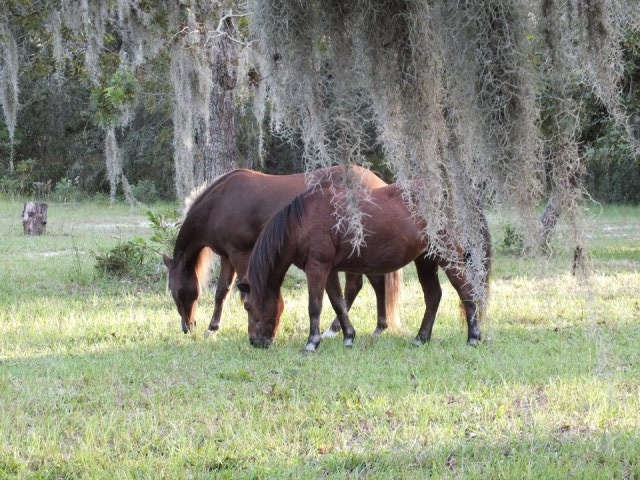 pony mares - Rick Gore Horsemanship
Question
Millie and Angel Millie and Angel
pony mares - Rick Gore Horsemanship
Question
Millie and Angel Millie and Angel
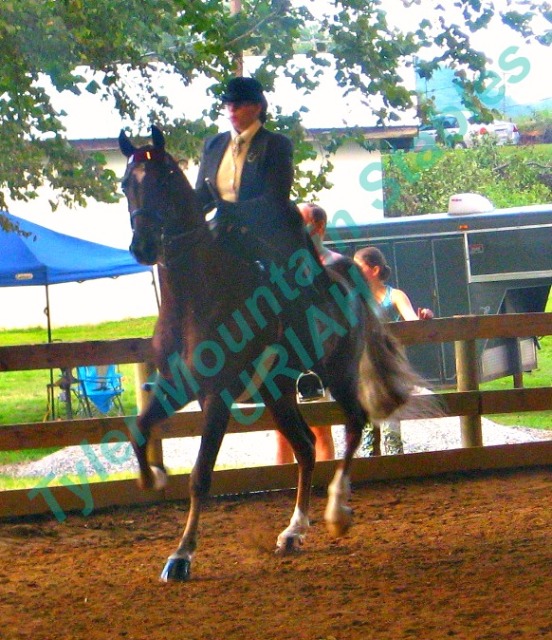 Double bridle prob.
Question
Uriah and Hope
I have a saddlebred and
Double bridle prob.
Question
Uriah and Hope
I have a saddlebred and
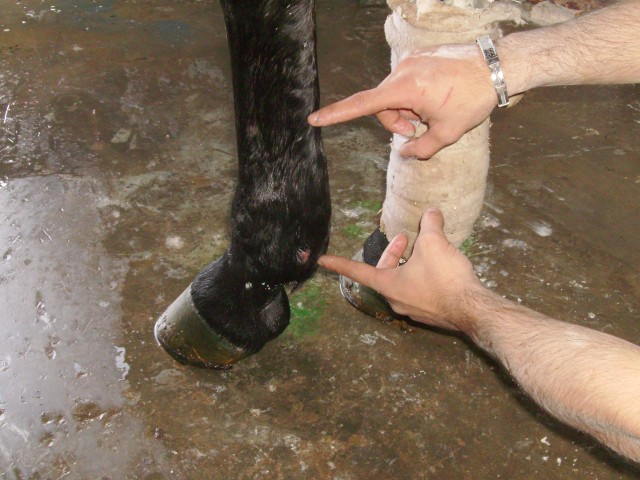 Horse swallen ankle problem
QuestionQUESTION: Hi.I am not much in to horses but a g
Horse swallen ankle problem
QuestionQUESTION: Hi.I am not much in to horses but a g
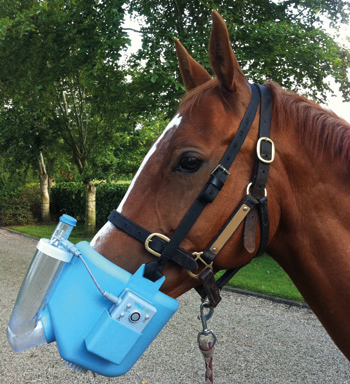 remedy for caugh and cold
Question
nebulizer
hello maam. what is the remed
remedy for caugh and cold
Question
nebulizer
hello maam. what is the remed
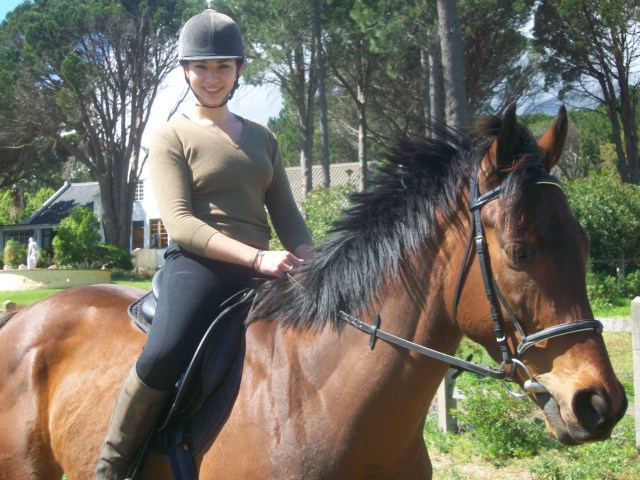 Bugs in my geldings mane.
Question
This is a recent pictu
Hi there
I live in Cap
Bugs in my geldings mane.
Question
This is a recent pictu
Hi there
I live in Cap